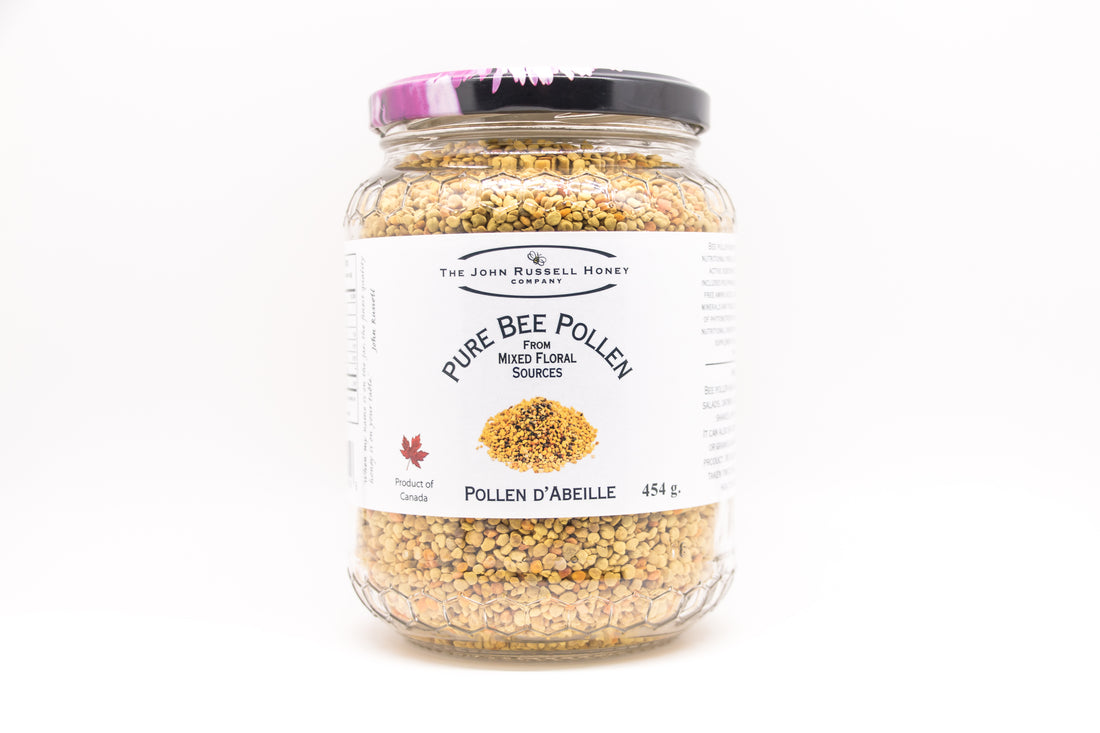In its original state, pollen is a fine powder composed of microscopic particles which are discharged from the anther of a flower.
There are two kinds of pollen: anemophile ("friend of the wind"), and entomophile ("friend of the insect"). Anemophiles cause allergic reactions such as hay fever, are dispersed by the air. Entomophile are gathered by the honeybee, whose travels from flower to flower make possible the reproduction of more than 80% of the world's grains, fruits, vegetables and legumes. When pollen is collected for human consumption, "pollen traps" are placed on the hive. These traps remove the pollen granules from the leg of the bee and allow it to fall down into a tray for removal by the beekeeper. After removing the non pollen particles by fan, the pollen is dried and frozen and ready for consumption.

